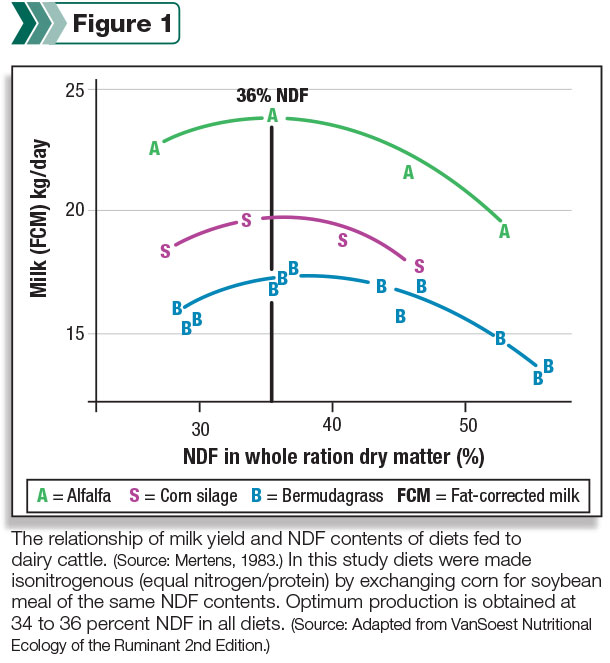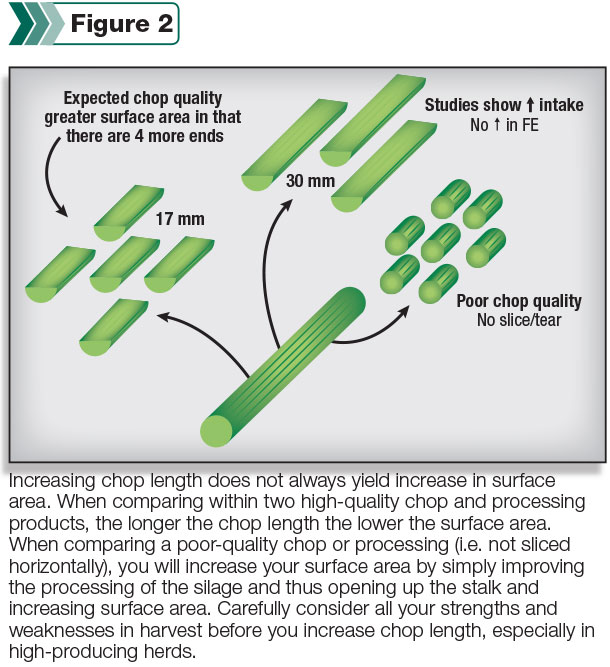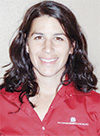Time spent thinking about, planning for and dealing with forage varies from farm to farm. However, we find one thing very consistent among our clients and our team of nutritionists: We all expect each dollar to go further today than it ever has in the past.
Maximizing the return on your forage investment and investing in time spent dealing with forage will immediately and directly impact your profitability. Budgeting your time to maximize the value of this investment is critical.
Why do cows need forage anyway?
Through technology, we now know so much more about byproduct feeding that we continue to push the use of economic byproduct forage replacers. However, cows need components held within forages for optimal rumen function and feed digestion.
Cows need fiber and forage as the most efficient way of delivering the level of fiber cows require. The neutral detergent fiber (NDF) portion, potentially the most important member of the fiber family, is held within the cell walls of forages we harvest.
NDF is the lignin, cellulose and hemi-cellulose portion of the plant. Fiber, specifically NDF, is essential for dairy cattle such that inadequate levels are associated with low milkfat, rumen acidosis and dietary inefficiencies.
To make matters more complicated, there is not a “requirement” for fiber, only a minimum that is ever-changing with the combination of ingredients in the ration. However, this minimum is the guideline to help rumen pH stability, milkfat production, fiber digestion and overall health of the rumen, reticulum, omasum and abomasum.
With accurate balance (and I stress balance), the addition of fiber from forages consistently shows an increased efficiency of feed conversion in high-concentrate rations. More specifically, whole-ration NDF levels curvilinearly influence fat-corrected milk production (Figure 1).

Again, this exact fiber requirement is elusive because the other components of the ration will impact the level of NDF needed. In addition, it is well-known that the quality of NDF source and production level of the cow will affect the rumen’s need for NDF.
Why maximize forages in rations?
Forages are still the most cost-effective way to deliver critical energy components to the rumen bugs. Moreover, forage sources such as corn silage bring an added bonus of starch to the energy equation of high-producing dairy cows.
The aforementioned struggles with forage procurement have put pressure on those of us feeding dairy cattle to reduce what we feed and replace as much as we can with high-fiber byproducts to increase total NDF in the diet. This strategy is effective to a point, but we can’t forget that both rumen fill and effectiveness of fiber play critical roles in rumen health and milkfat production.
Quality of forage matters
Many of us expect high performance from marginal feeds. When formulated, mixed and delivered correctly, you can push the envelope with lower-quality forage, but you shouldn’t expect better performance.
When we think about quality for high-producing animals, we need to consider digestibility and passage rate. We want to strive for the highly digestible forages that remain in the rumen long enough but not too long. We want her bugs to bust open the cell walls and harvest the ATP in the time the feed spends in her rumen.
We do not want feeds to spend too much time hanging out in the rumen because high-producing cows need a tremendous amount of energy and will reduce productivity if feeds lag in her rumen. Feeds typically lag because they can’t be masticated (chewed) small enough or fast enough to be able to pass out of the rumen.
Lignin plays a role along with particle size in the passage rate. We want cows to chew their cud because it creates buffer, but it also exposes new cell walls to the bugs and furthers the complete breakdown of feedstuffs.
As plant maturity approaches, the cell walls continue to lay down lignin for stem strength, which reduces the digestibility and value of the forage. As fermentation or dry storage gets underway, maturity ends. In fermentation, the cells undergo extreme heat.
If this heat continues for too long (when silage is less than 15 pounds dry matter per cubic foot), the cell wall begins to cook or rot rather than ferment. Rotting to any extent (visible or invisible) changes the characteristics of the cell wall and renders it indigestible to a great degree.
What often happens is these marginal silages are fed, and they reduce the ability of the rumen to break down feeds into energy. Poor-quality forages (within and across forage types) as a percent have higher cell wall content and thus lower intercellular matter.
This increases gut fill, limits intake and reduces value of total ration. I do not advocate the use of poor-quality forage, but (speaking realistically) they are used, so we must limit or use correctly to get the most we can from the cows consuming them.
Size of forage particles matters
We can compound the negative effects of quality by feeding longer-than-necessary fiber. Rumen fill is important in triggering cud chewing. More than 120 studies have shown that when feed particles are too large or too long, cud chewing is prolonged and intakes are limited. Why? Less surface area is one suggestion. Feeds that are digestible but too long will still need to spend a significantly longer time in the rumen to be able to pass into the omasum.
Surface area and size matter in discussing intake limitations of feeding forage. Always maximize the surface area of forages to improve the speed at which the bugs break open the cells. In the case of dry hays, we can have negative effects for hay that is too short or too long.
Sortability and passage rate are the main concerns with these two scenarios. It’s important to manage the length using proven tools like the Penn State shaker box, which recommends 7 to 10 percent (plus or minus 2 percent) on the top screen.
With silage, especially corn silage, you have an interesting dynamic when it comes to fiber. Surface area is critical in all feed sources, but we have had some “protocol drift,” as one of my clients calls it, in harvesting management in the recent few years.
We, the dairy industry, have in recent years stepped up the management of corn silage harvest. Baseline or minimum expectations are 32 percent dry matter, consistently harvested particle length of ¾- to 1-inch long (non-BMR varieties), stalks that are sliced vertical and horizontal with kernels processed so well they are unrecognizable.
Going on that baseline harvested product, I will touch on length as a characteristic that can limit intake and thus the production of our highest-producing cows. As an example, if we decide to increase length of chop to 26 to 32 mm (long) versus 17 to 19 mm (recommended), we are reducing our surface area for bugs to attach and digest the fiber. If you have three pieces at 30 mm, you can take that same 90 mm and make five pieces at 18 mm, resulting in four more end caps for bugs to work.
Figure 2 is an example of how longer chop length reduces surface area. There is hype in the marketplace today regarding longer corn silage; be cautious that you are not limiting intake. Longer length is not always more surface area. Remember, vertical and horizontal slicing is expected from modern harvesters right off the dealer lot; don’t settle for less.

All forages should be presented in a manner that they will not be sorted. One rule of thumb is that the stems of dry alfalfa hay shouldn’t be longer than the width of the cow’s mouth. Why the difference in length for dry hay or silage? Simply put, corn silages have thicker stalks than hay, yield higher energy and need more time to be fully digested.
Managing the fiber budget in the rations and at harvest has proven to be a good use of dairymen’s time and resources. With constantly shifting needs for fiber in the ration, the fact that poorer fiber limits intake and length of fiber can act similarly in reducing intake, we can’t get discouraged about how to maximize it in our rations. I hope to encourage more dairymen to seek wisdom in improving forage management with so many resources and allied industry support out there today.
Cows need high-quality fiber to sustain healthy, productive lives. This fiber yields abundant energy for reproduction and milk production. Fiber is still the most economically sound way to achieve rumen fill and supply nutritive components for a healthy rumen environment.
Particle size can be misleading if optimal processing is not currently being achieved. No doubt, technology to grow better, harvest better and feed better forages has boosted our ability to do more with less, so let’s continue to capitalize on those strengths. PD

-
Luciana Jonkman
- Nutrition and Management Consultant
- Progressive Dairy Solutions Inc.
- Email Luciana Jonkman






